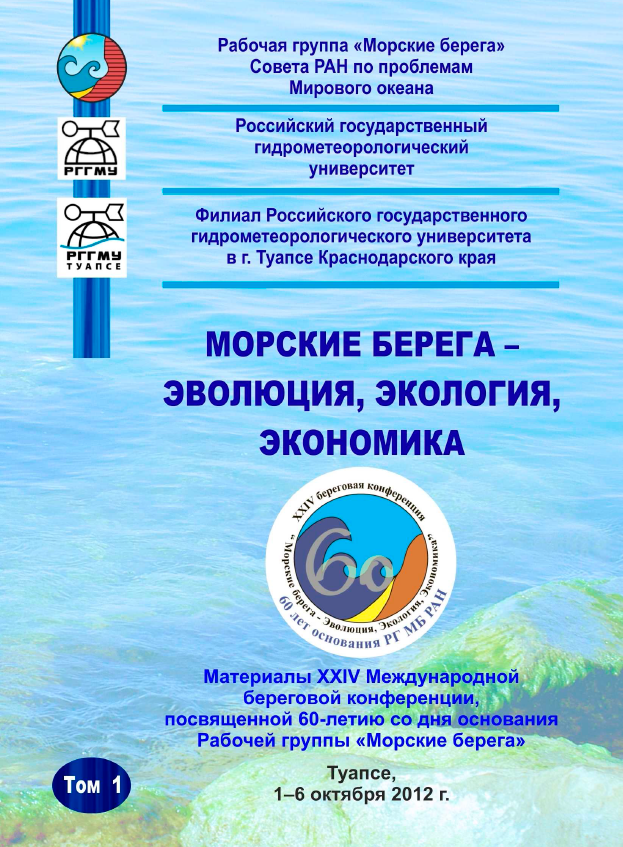Moscow, Russian Federation
Russian Federation
BISAC NAT010000 Ecology
BISAC NAT045050 Ecosystems & Habitats / Coastal Regions & Shorelines
BISAC NAT025000 Ecosystems & Habitats / Oceans & Seas
BISAC NAT045030 Ecosystems & Habitats / Polar Regions
BISAC SCI081000 Earth Sciences / Hydrology
BISAC SCI092000 Global Warming & Climate Change
BISAC SCI020000 Life Sciences / Ecology
BISAC SCI039000 Life Sciences / Marine Biology
BISAC SOC053000 Regional Studies
BISAC TEC060000 Marine & Naval
Acoustic methods belong to contactless measurement means, possess high spatial and time resolution. Thus, the use of multifrequency allows directly profile both concentration and granulometric structure of the suspended substances. In 2008 in the Big Wave Flume (Hanover, Germany) by efforts of the Russian and German scientists there have been carried out the experiment on studying the bottom material suspension laws under the influence of irregular waves. The Aquascat 1000 acoustic back scattering sensor (ABS) manufactured by British company Aquatec (www.aquatecsubsea.com), equipped by a three-frequency transmitter with frequencies 1,0, 2,0 and 3,84 MHz, has been set on distance of 0,75 m from the bottom and 111 m from wave generator at the total depth of 3,2 m. Several dozen series of measurements at various parameters of surface waves have been carried out. The general picture of suspension is so that the external dynamic influence (currents, wave movements, turbulence, gravitation forces) creates a non-uniform field (gradient) of the suspended particles and in most cases due to this the average size of particles undergoes to the spatial-time variations. For this reason while defining the mass concentration of suspended sediment, using the single frequency transmitter there is necessity for numerous definition of the suspension granulometric structure what by isn’t always possible. If two and more frequencies are used the observed results comparison can give the information on average diameters of particles and on that basis the calculation of suspended sediment concentration is possibleLet's emphasize the basic advantages of back scattering acoustic gauges usage: – Obtaining the particles sizes and concentration distribution profiles is possible; – The initial granulometric structure of bottom sediments can be unknown (at use of several frequencies). The following can be referred to some lacks of the device: – The system should be calibrated in laboratory conditions; – In a positive feedback conditions the iterative computing process can converge to zero or to infinity. In this case experiments with a variation of carrier frequencies chosen for the analysis allow partially solve the problem (say experiments with different frequencies pairs, as 2/1 of MHz or 4/2 MHz).
laboratory conditions
1. Kos’yan R., Grüne J., Divinsky B., Podymov I., Vincent C., Ahmari A., Oumeraci H. The dependence of suspended sand concentration on the degree of storm development // 32nd International Conference on Coastal Engineering ICCE2010, 30 June - 5 July 2010.Shanghai, China.
2. Soulsby R., 1997. Dynamics of marine sands, Thomas Telford Publications, London.
3. Thorne, P.D. and Hanes, D.M., 2002. A review of acoustic measurement of small-scale sediment processes. Continental Shelf Research. Vol. 22. P. 603-632.





